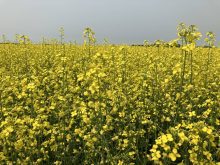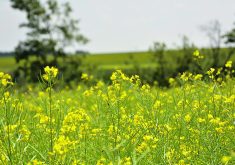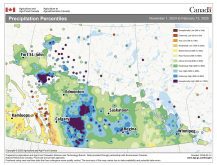An entertaining part of being an agricultural journalist is trying to figure out how the crops are doing.
If you ask a farmer, the traditional answer is: “Who’s asking? You or Statistics Canada?”
It’s a humorous recognition that farmers don’t like to provide an accurate assessment to the federal crop surveyors. Why? Many think that if StatCan reports crops are average or better, prices will fall.
Read Also

Government, industry seek canola tariff resolution
Governments and industry continue to discuss how best to deal with Chinese tariffs on Canadian agricultural products, particularly canola.
Some apply an austerity program to their truth-telling, deliberately understating the yields they expect to reap and exaggerating crop production problems in their area.
If an ag reporter asks on social media about how crops look, they’re unlikely to hear anything but grim reports of gravely low yields.
If a reporter writes a story in which an analyst predicts good yields, and an editor dares to use the phrase “bumper crop” in a headline (it happened twice three weeks ago,) he’s likely to invite outrage, critical comments and pithy descriptions of his essential nature.
The idea under all this reality-bending is that if farmers pretend the crop is smaller than it is, the traders, elevator companies, food companies and other elements of the food industry will fret about short supplies and drive up prices.
Does that really happen? Some farmers act like it does.
Traders say it doesn’t. Most know a few things about crops. They know the phenomenon of farmer yield understatement, and they run mathematical fudge factors in their minds when making their own estimates.
Most commercial players closely watch reports from crop tours across Western Canada and the U.S. every summer in July and August. Provincial and state crop reports are valued as slightly backward-facing data that provides a good baseline.
The foundation for most non-farmers’ estimates comes from the U.S. and Canadian federal agencies that estimate crop yields and crop supply and demand fundamentals. When those agencies were mostly reliant upon farmer surveys, they would “correct” the data to reflect long-term reporting error trends, such as farmer underreporting.
These days government agencies, food companies and market analysts often rely on new measures, such as vegetative indices built from satellite images. It’s hard to fool those eyes in the sky.
Some farmers are just plain anxious and pessimistic about any crop. After seeing droughts and hail and frost ravage so many seemingly good crops over the decades, most have a natural proclivity to see less in the heads and the pods than a purely contemporary analysis might suggest.
And some truly fear tempting fate by becoming yield-bullish before the crop’s in the bin. When it comes to frost, for example, some farmers hate hearing anybody even mention the “f-word” for fear of incurring a hex.
The markets aren’t easy to fool. But it’s hard to imagine farmers ever leaving behind this piece of farming culture. A century from now, we’ll probably still have farmers who want to believe they have a big crop coming, but won’t admit it — except to their creditors.


















